Writing skill part 21: The Intersection of Art and Technology in the Modern World
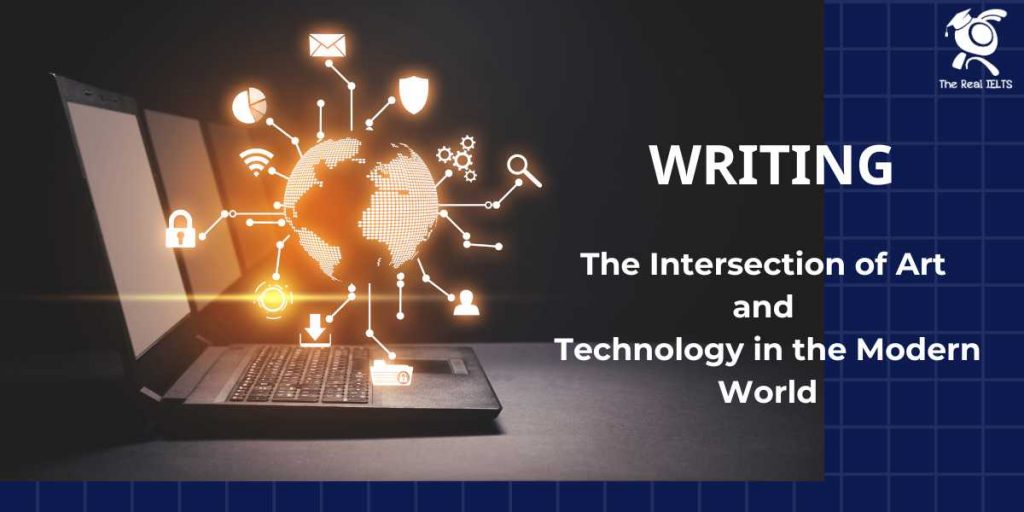

Chủ đề”The Intersection of Art and Technology in the Modern World” là chủ đề luyện Writing Skill phần 21. Sau đây là phần gợi ý luyện tập. Writing Outline: The Intersection of Art and Technology in the Modern World I. Introduction A. Brief overview of art and technology B. Importance of the intersection between art and technology C. Thesis statement: The integration of art and technology in the modern world has revolutionized creative expression, expanded artistic possibilities, and reshaped various industries. II. Historical Context A. Early instances of technology influencing art 1. The invention of the camera and its impact on visual arts 2. Early digital art and computer graphics B. Evolution of the relationship between art and technology over time III. Modern Developments A. Digital Art and New Media 1. Digital painting and illustration 2. Virtual reality (VR) and augmented reality (AR) art B. Interactive and Immersive Experiences 1. Interactive installations and exhibitions 2. Immersive theater and performance art C. Artificial Intelligence and Machine Learning in Art 1. AI-generated art 2. Machine learning in music composition and sound design IV. Impact on Various Art Forms A. Visual Arts 1. Digital sculpture and 3D printing 2. Online galleries and virtual exhibitions B. Performing Arts 1. Technology in dance and choreography 2. Digital scenography and stage design C. Music 1. Electronic music production 2. Digital distribution and streaming platforms V. Benefits and Challenges A. Benefits 1. Accessibility and democratization of art 2. New creative tools and methods 3. Global collaboration and exposure B. Challenges 1. Ethical considerations in AI art 2. Preservation of digital art 3. The digital divide and access to technology VI. Case Studies A. Prominent artists and projects at the intersection of art and technology 1. Examples of successful integration 2. Impact on the art community and audience B. Future trends and potential developments VII. Conclusion A. Recap of key points B. The ongoing evolution of art and technology C. Final thoughts on the future of creative expression in the modern world. Vocabulary to Note in the Essay I. Introduction II. Historical Context III. Modern Developments IV. Impact on Various Art Forms V. Benefits and Challenges VI. Case Studies VII. Conclusion The Intersection of Art and Technology in the Modern World I. Introduction Art and technology, two seemingly distinct realms, have increasingly intersected, giving rise to a new era of creative expression. The fusion of these fields is not just a modern phenomenon but a dynamic evolution that has reshaped how we perceive and create art. This essay explores the significance of this intersection, demonstrating how technology has revolutionized artistic possibilities and transformed various industries. II. Historical Context The relationship between art and technology is rooted in history. The invention of the camera in the 19th century marked a significant turning point, revolutionizing visual arts by introducing photography. Artists began experimenting with new ways to capture reality, leading to movements such as Impressionism. In the late 20th century, the advent of digital art and computer graphics opened up unprecedented opportunities for creative expression, laying the groundwork for today’s innovations. III. Modern Developments In the contemporary world, digital art and new media have become prominent. Digital painting and illustration, created using software like Adobe Photoshop and Corel Painter, allow artists to experiment with infinite colors and tools without the limitations of physical materials. Virtual reality (VR) and augmented reality (AR) have further expanded artistic horizons, offering immersive experiences that engage viewers in entirely new ways. Interactive and immersive experiences are another frontier. Installations that respond to viewer interactions, such as teamLab’s digital art exhibitions, blend technology with creativity to create dynamic environments. Immersive theater and performance art, like Punchdrunk’s “Sleep No More,” use technology to enhance storytelling and audience engagement. Artificial intelligence (AI) and machine learning are also making significant inroads into art. AI-generated art, exemplified by works created using algorithms like DeepArt and Google’s DeepDream, challenges traditional notions of creativity. In music, machine learning aids in composing and sound design, with AI tools like AIVA (Artificial Intelligence Virtual Artist) assisting composers in creating new pieces. IV. Impact on Various Art Forms The impact of technology on visual arts is profound. Digital sculpture and 3D printing have revolutionized sculptural practices, allowing artists to create intricate designs with precision. Online galleries and virtual exhibitions have democratized access to art, enabling global audiences to experience artworks without geographical constraints. Performing arts have also embraced technology. In dance, motion capture technology allows choreographers to create complex movements and visualize performances in virtual spaces. Digital scenography and stage design enhance live performances, providing visually stunning backdrops and interactive elements that were previously unimaginable. In the realm of music, electronic music production has become mainstream. Digital audio workstations (DAWs) like Ableton Live and FL Studio enable musicians to compose, produce, and edit music with unprecedented ease. Digital distribution and streaming platforms, such as Spotify and Apple Music, have transformed the music industry, making it easier for artists to reach audiences worldwide. V. Benefits and Challenges The integration of art and technology offers numerous benefits. It has made art more accessible and democratized, allowing a broader range of people to create and experience art. New creative tools and methods have emerged, providing artists with innovative ways to express themselves. Global collaboration has become more feasible, connecting artists and audiences across borders. However, these advancements also present challenges. Ethical considerations in AI-generated art raise questions about authorship and originality. The preservation of digital art poses difficulties, as technological obsolescence can render digital works inaccessible. The digital divide, which limits access to technology for some populations, remains a significant barrier to equitable artistic participation. VI. Case Studies Several prominent artists and projects exemplify the successful integration of art and technology. For instance, artist Refik Anadol’s data-driven installations use machine learning algorithms to create mesmerizing visual experiences. Similarly, the digital art collective teamLab creates immersive exhibitions that blend art, technology, and nature. Future trends suggest even deeper integration of these fields. Advancements in AI and machine learning
IELTS Writing Task 1 Bar Chart: Health Insurance
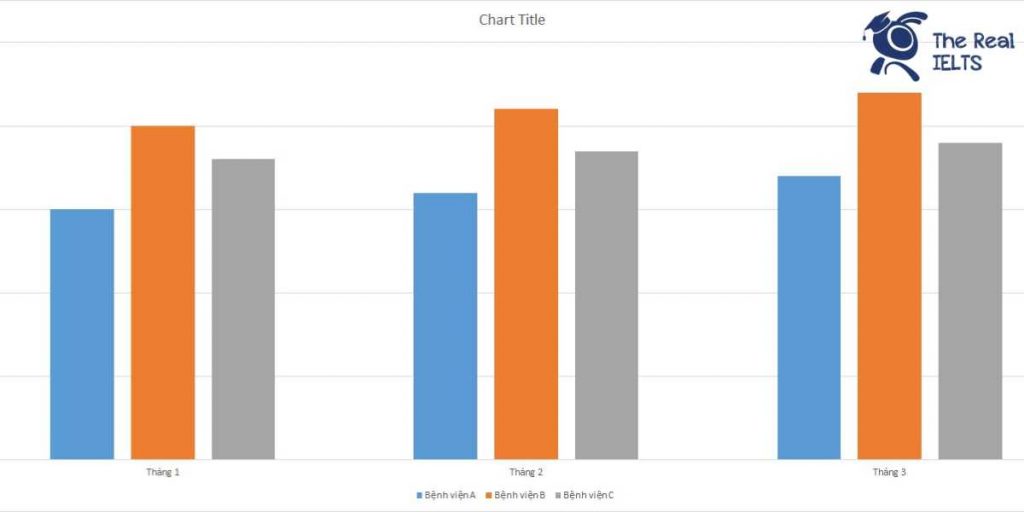

IELTS Writing Task 1 yêu cầu phân tích biểu đồ Bar Chart thể hiện số lượng người tham gia bảo hiểm y tế trong ba tháng tại các bệnh viện khác nhau.
IELTS Writing Task 1 Bar Chart: App Customers
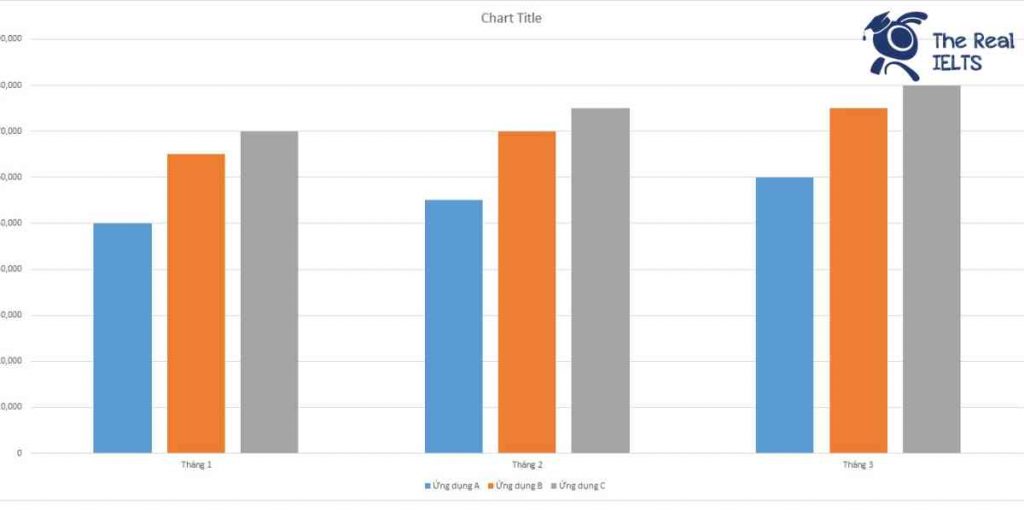

IELTS Writing Task 1 yêu cầu bạn phân tích số liệu về số lượng khách hàng sử dụng dịch vụ giao hàng của ba ứng dụng mua sắm trong vòng ba tháng.
IELTS Writing Task 1 Bar Chart: Dietary Supplements
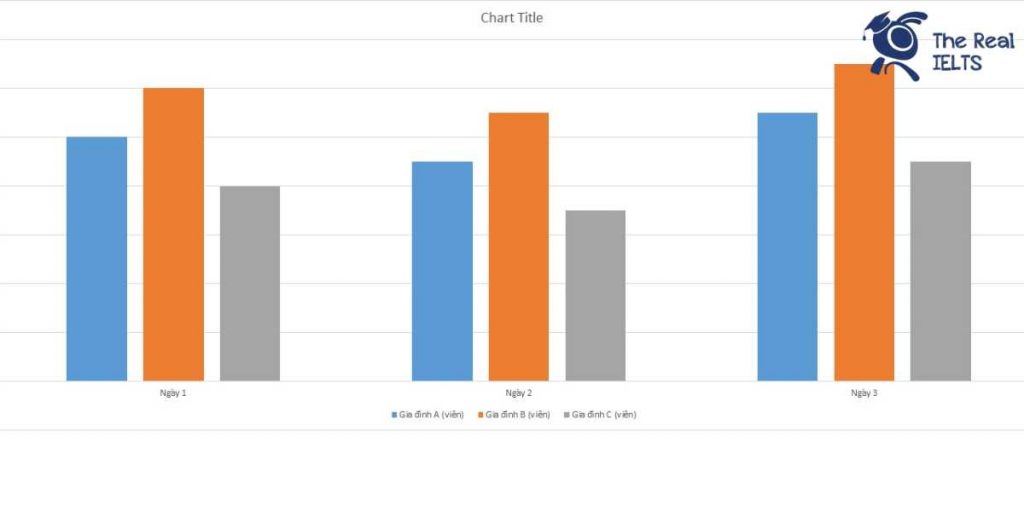

Trong bài IELTS Writing Task 1 này, bạn sẽ mô tả lượng tiêu thụ thực phẩm chức năng trong 3 ngày của 3 gia đình khác nhau, dựa trên biểu đồ cột (Bar Chart). Biểu đồ cho thấy số lượng sản phẩm tiêu thụ của từng gia đình trong các ngày cụ thể, cho phép bạn so sánh và phân tích mức tiêu thụ. Đọc bài này Cách làm bài IELTS Writing Task 1 Bar Chart trước khi làm bài. Bạn cũng có thể đọc lại bài nói về Task 1 tại đây: IELTS Writing Task 1 cần lưu ý những gì? Đọc thêm về xây dựng lộ trình học IELTS của The Real IELTS. IELTS Writing Task 1 Bar Chart: Dietary Supplements You should spent about 20 mintutes on this task In this IELTS Writing Task 1, you will describe the consumption of dietary supplements over 3 days by 3 different families, based on a bar chart. The chart shows the amount of products consumed by each family on specific days, allowing you to compare and analyze their consumption levels. You should write at least 150 words. Ngày Gia đình A (viên) Gia đình B (viên) Gia đình C (viên) Ngày 1 10 12 8 Ngày 2 9 11 7 Ngày 3 11 13 9 IELTS Writing 1 Overview The table below presents the consumption of dietary supplements by three different families over a period of three days. The families are labeled as Family A, Family B, and Family C. The data shows the number of pills consumed each day by each family. This report will analyze and compare the consumption patterns of these families. Body 1 On the first day, Family A consumed 10 pills, Family B consumed 12 pills, and Family C consumed 8 pills. Family B had the highest consumption on this day, while Family C had the lowest. The differences in consumption could be due to varying family sizes, health needs, or preferences for dietary supplements. Body 2 On the second day, Family A’s consumption slightly decreased to 9 pills, while Family B’s consumption also dropped to 11 pills. Family C consumed 7 pills, showing a consistent decrease in their intake as well. However, on the third day, all three families increased their consumption: Family A consumed 11 pills, Family B consumed 13 pills, and Family C consumed 9 pills. Family B maintained the highest consumption throughout the three days, indicating possibly a higher dependency or need for supplements compared to the other families. IELTS Writing 2 Overview The table below represents the hypothetical consumption of dietary supplements over three days by three different families: Family A, Family B, and Family C. The data, measured in units of pills consumed, highlights variations in supplement intake across the families and over the three-day period. Body 1: Analysis of Supplement Consumption On Day 1, Family A consumed 10 pills, Family B consumed 12 pills, and Family C consumed 8 pills. This initial day shows Family B with the highest consumption, while Family C had the least. On Day 2, the numbers slightly decreased for all families: Family A consumed 9 pills, Family B consumed 11 pills, and Family C consumed 7 pills. This trend indicates a general reduction in supplement intake on the second day for all families. Body 2: Trends and Insights On Day 3, consumption increased across all families. Family A took 11 pills, Family B took 13 pills, and Family C took 9 pills. Notably, Family B consistently had the highest consumption over the three days, whereas Family C consistently had the lowest. This data suggests that Family B may have a higher dependency or requirement for dietary supplements compared to the other families, while Family C may have a more moderate approach to supplement intake.
IELTS Writing Task 1 Bar Chart: Children Attending
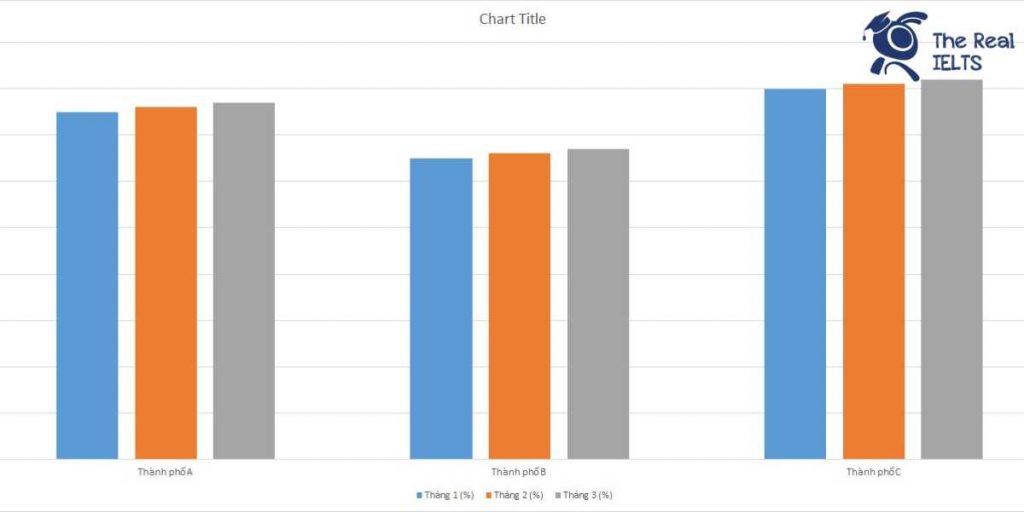

IELTS Writing Task 1 yêu cầu mô tả biểu đồ bar chart thể hiện số lượng trẻ em đến học tại ba trường ở ba thành phố khác nhau.
IELTS Writing Task 1 Bar Chart: Home Repair
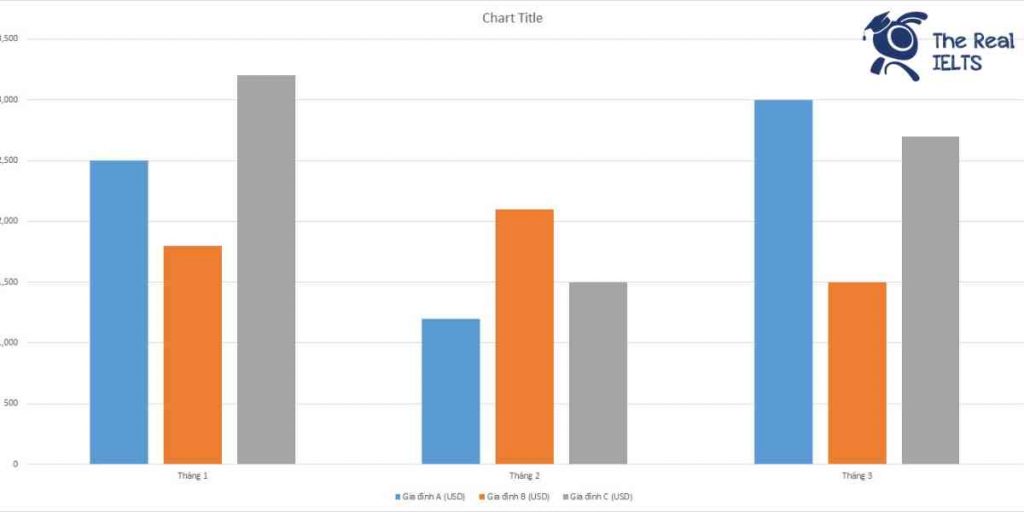

IELTS Writing Task 1 yêu cầu thí sinh miêu tả chi phí sửa chữa nhà cửa của ba gia đình khác nhau trong ba tháng, được biểu thị bằng biểu đồ thanh.
IELTS Writing Task 1 Bar Chart: Internet Usage 2
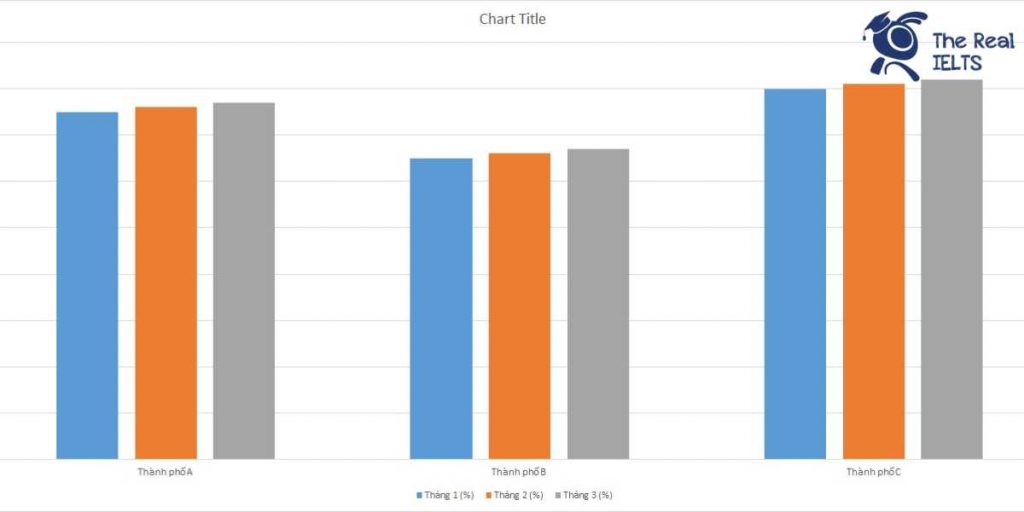

IELTS Writing Task 1 yêu cầu bạn phân tích và mô tả dữ liệu từ biểu đồ. Trong bài này, bạn sẽ xem xét tỷ lệ người dân sử dụng Internet trong 3 tháng của 3 thành phố thông qua một Bar Chart.
Cấu trúc “so long as” sử dụng cho IELTS Writing và 100 câu ví dụ
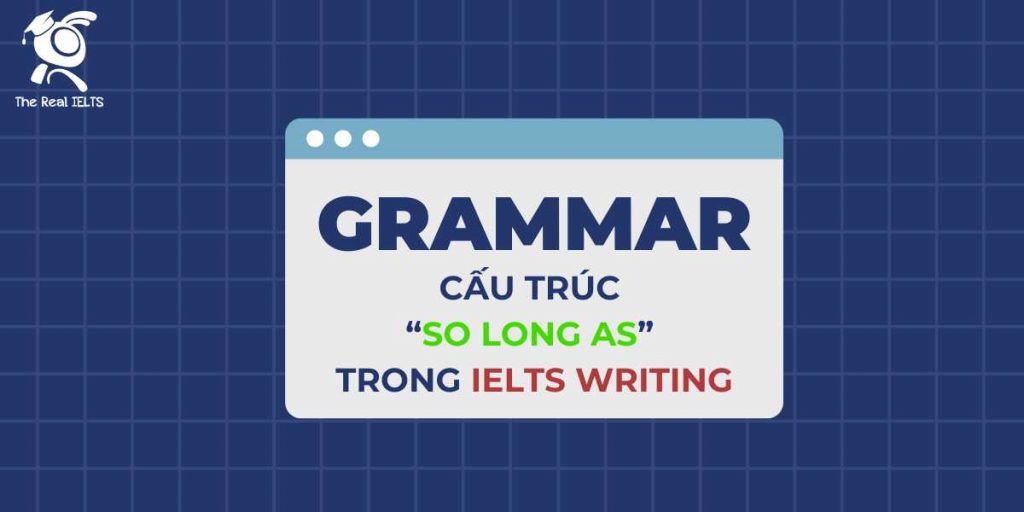

Cấu trúc hữu ích mà bạn nên biết là “so long as”. Đây là cấu trúc biểu đạt điều kiện tương tự như “as long as” hay “provided that”, và thường được dùng để nhấn mạnh mối quan hệ điều kiện.
IELTS Writing Task 1 Bar Chart: Civil Cases
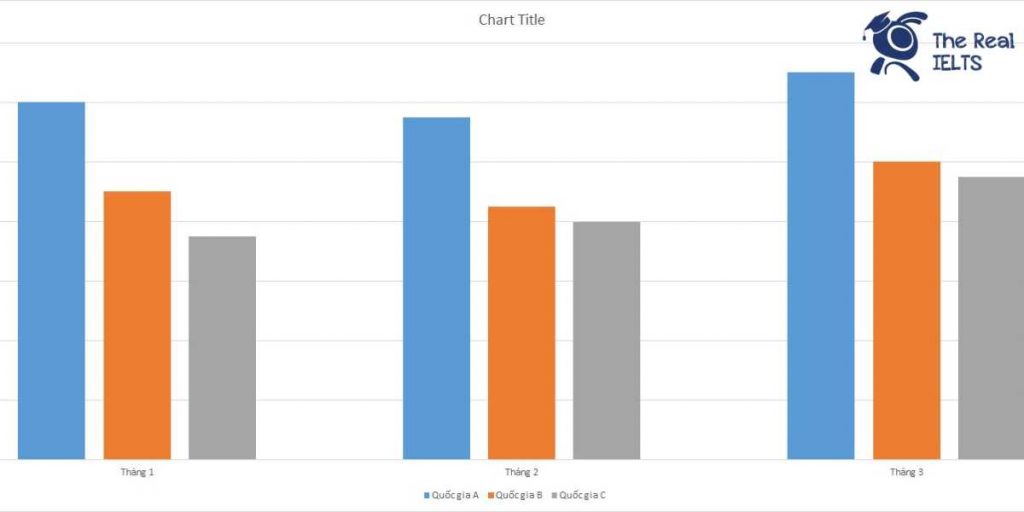

IELTS Writing Task 1 yêu cầu bạn phân tích biểu đồ bar chart minh họa số lượng vụ án dân sự trong 3 tháng tại 3 quốc gia khác nhau. Bạn cần mô tả sự thay đổi số lượng vụ án theo thời gian, so sánh sự khác biệt giữa các quốc gia và nêu bật những xu hướng chính. Để đạt điểm cao, hãy sử dụng ngôn ngữ chính xác và cấu trúc câu mạch lạc. Đọc bài này Cách làm bài IELTS Writing Task 1 Bar Chart trước khi làm bài. Bạn cũng có thể đọc lại bài nói về Task 1 tại đây: IELTS Writing Task 1 cần lưu ý những gì? Đọc thêm về xây dựng lộ trình học IELTS của The Real IELTS. IELTS Writing Task 1 Bar Chart: Civil Cases You should spent about 20 mintutes on this task IELTS Writing Task 1 requires you to analyze a bar chart illustrating the number of civil cases over three months in three different countries. You need to describe the changes in the number of cases over time, compare the differences between the countries, and highlight the main trends. To achieve a high score, use precise language and coherent sentence structures. You should write at least 150 words. Quốc gia Tháng 1 Tháng 2 Tháng 3 Quốc gia A 120 115 130 Quốc gia B 90 85 100 Quốc gia C 75 80 95 Bài mẫu 1 Overview The table provided illustrates the number of civil cases recorded over three months (January, February, and March) in three countries: Country A, Country B, and Country C. This data is hypothetical and serves as an example to analyze the trends in civil litigation across these nations. Body 1: Analysis of Civil Cases in Country A In Country A, the number of civil cases shows a slight fluctuation over the three months. In January, there were 120 cases, which decreased to 115 in February, and then increased significantly to 130 in March. This indicates a temporary decline in February, but overall, there is an upward trend from January to March. The increase in March might suggest either an actual rise in civil disputes or more efficient reporting mechanisms during that period. Body 2: Comparative Analysis of Countries B and C Country B and Country C both show a gradual increase in the number of civil cases from January to March. Country B reported 90 cases in January, which slightly decreased to 85 in February but rose to 100 in March. Similarly, Country C had 75 cases in January, 80 in February, and 95 in March. Although both countries experienced a dip in February, they followed a similar upward trend by the end of March. This pattern might reflect seasonal factors or other underlying issues affecting civil disputes in these countries. In conclusion, while all three countries show variability in civil case numbers over the three months, the overall trend indicates an increase in March compared to January, suggesting a rise in civil litigation or improved case reporting towards the end of the period. Bài mẫu 2 Overview The table illustrates the number of civil cases filed in three countries over three months: January, February, and March. The data shows fluctuations in the number of cases across the countries and months. Body 1 In January, Country A had the highest number of civil cases at 120, followed by Country B with 90 cases, and Country C with 75 cases. In February, the number of cases in Country A slightly decreased to 115, while Country B saw a small reduction to 85 cases. Interestingly, Country C experienced a slight increase, recording 80 cases. Body 2 March witnessed an increase in the number of civil cases for all three countries. Country A’s cases rose to 130, marking the highest monthly figure for the period. Country B’s cases also increased to 100, while Country C saw a rise to 95 cases. This upward trend in March suggests a potential seasonal or situational factor influencing the number of civil cases filed across these countries.





